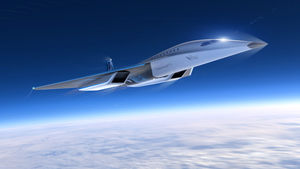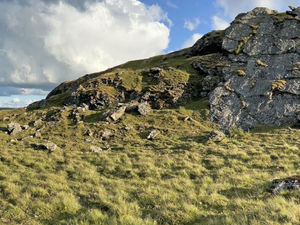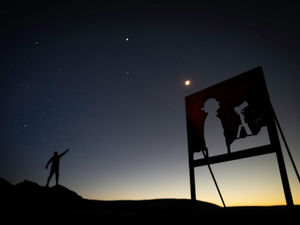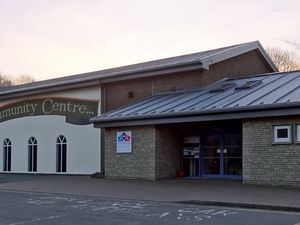Boom! Could Branson take us to New York in two hours?
Fancy a trip to Perth? Well at the moment you could get a train from Birmingham, arriving in the Scottish city six hours 11 minutes later.

HS2, if and when it is finally finished, might shave half an hour off that. Or, under Sir Richard Branson’s latest venture, you could get to Perth in five hours – but not Perth in Scotland, Perth in Australia. Yes, it could soon be quicker to travel to the other side of the world than the northern end of this country.
Sir Richard’s Virgin Galactic has teamed up with Rolls-Royce to develop a plane capable of travelling at three times the speed of sound. Not only would it be possible to circumnavigate the globe in a day, but it would also be quicker to take a flight to New York than a train to York.
It looked like the age of supersonic travel had ended when Concorde was retired 17 years ago. But if Virgin’s latest plans bear fruit, it could be back with a boom.
While the concept is still in the early stages, detailed plans have been drawn up for a plane which, with a top speed of 2,300mph, would make even Concorde seem decidedly pedestrian. On the other hand, it would have space for a maximum of 19 passengers, so it would certainly be an exclusive affair.
Virgin says the Mach-3 jet will target existing long-distance commercial routes, taking off and landing normally at existing airports.
The next phase will look at which materials to use, how to reduce noise and emissions, and how to keep the jet cool as it flies supersonically.
California-based Virgin Galactic, better known for its ‘space tourism’ business, is also in collaboration with US start-up Boom to develop a separate 45-seater supersonic airliner, although its maximum speed would be 'only' about 1,700mph. A one-third size scale model is due to be developed this year, with test flights starting next year.
George Whitesides, chief space officer at Virgin Galactic, says the plane will break new ground.
“We are excited to unveil this initial design concept of a high speed aircraft, which we envision as blending safe and reliable commercial travel with an unrivalled customer experience,” he says.
“We are pleased to collaborate with the innovative team at Rolls-Royce as we strive to develop sustainable, cutting-edge propulsion systems for the aircraft. We have made great progress so far, and we look forward to opening up a new frontier in high speed travel.”
While this sounds the sort of thing that will give Greta Thunberg the vapours, Virgin actually claims it will break new ground in green aviation.
“The aircraft design aims to help lead the way toward use of state-of-the-art sustainable aviation fuel,” says a company spokesman.
So far, there have been only two supersonic passenger aircraft: the Soviet Tupolev Tu-144, which made its first flight on New Year’s Eve, 1968, and the Anglo-French Concorde, which first flew three months later.
While the Russians claimed victory in the Cold War race for supersonic flight, the kudos was shortlived. The Tu-144 was so unreliable that the Soviet Government took the embarrassing step of asking for British assistance in 1978.
US test pilot Chuck Yeager was the first person to break the sound barrier when he flew the Bell XS-1 rocket-powered fighter plane Glamorous Glennis at Mach 1.05 (806mph) on October 14, 1947.
But while the Americans led the way in supersonic military aviation, they were never really in the race for supersonic commercial travel.
The idea of a supersonic airliner was first mooted in the early 1950s by Arnold Hall of the Royal Aircraft Establishment, and a committee to further the project held its first meeting in 1954. In 1959, a study contract was awarded to Hawker Siddeley and Bristol Aeroplane Company for preliminary designs. At the same time, the French Government was working on a similar project – it later emerged the British plans had been leaked to the French – and in 1962 it was agreed that the two countries would collaborate as a joint venture.
US journalist John Steele Gordon claims France was always the UK’s second-choice partner. He says the British Government initially approached the US, but the Americans were unwilling to be junior partners to the UK, which was well ahead in research at this stage.
“Unwilling to play second fiddle to the British, it decided to leapfrog ahead of what the British had in mind and develop a second-generation supersonic transport that would be able to travel at Mach 3,” he says.
“The idea was to concede the first supersonic transport sales to the British and then seize back the market with a much more capable plane. For the interim, Boeing began work on the 747, the first jumbo jet.”
By this time, the Soviet Government was also working on its rival plane. While the Tu-144 and Concorde looked similar, they were quite different in design. The Russian plane was both bigger and faster, with a maximum speed of 1,429mph compared to Concorde’s 1,354mph.
But while the Soviet jet might have had the more impressive on-paper statistics, the Anglo-French consortium could genuinely say it produced the only supersonic airliner that actually worked properly.
The Tu-144’s high speed came at the expense of prodigious fuel consumption, meaning it could only travel short distances. The Soviet Government had so little confidence in its reliability, that it only published details of its first successful flight after the event. On entering service in 1975, it suffered 226 failures in 102 flights, 80 of them happening in the sky.
Meanwhile, US plans to develop a ‘Concorde killer’ never got, well, off the ground. The Boeing 2707 promised to outperform both Concorde and the Tu-144, with a top speed of 1,800mph, and also to carry 300 passengers, three times as many as Concorde. But its advanced ‘swing-wing’ design was too clever for its own good, and the plans were dropped.
Concorde, it has to be said, was not a commercial success either, with its huge development costs never recovered. Its other trouble was that the supersonic ‘boom’ generated on take off had a habit of shattering windows below, placing severe limits on where it could be used.
With the Russian plane proving unreliable, the Anglo-French one a technological masterpiece but a commercial failure, and the American one nothing more than a pipe dream, it takes a brave man to believe he can make it fourth time lucky.
Sir Richard Branson thinks he is that man. Whether he is a visionary or simply foolhardy remains to be seen. But almost 60 years since the Americans rebuffed Britain’s offer to enter a new era in high-speed travel, the two countries are working together to take it to the next level.





